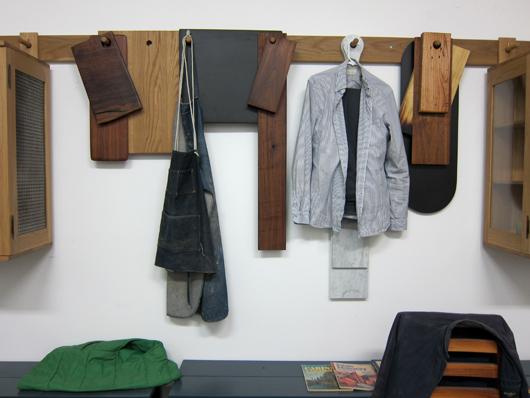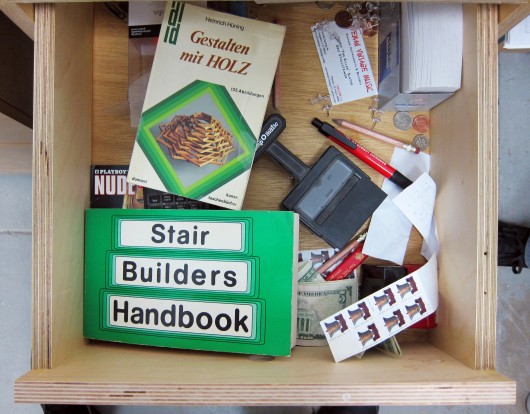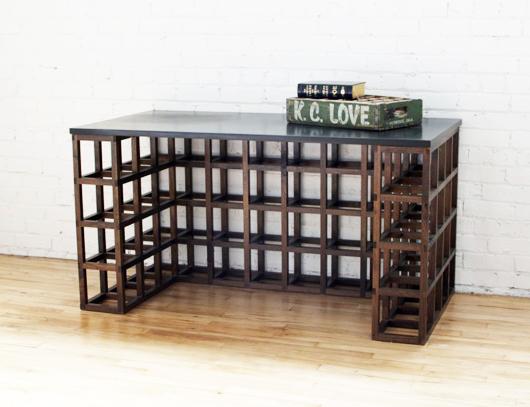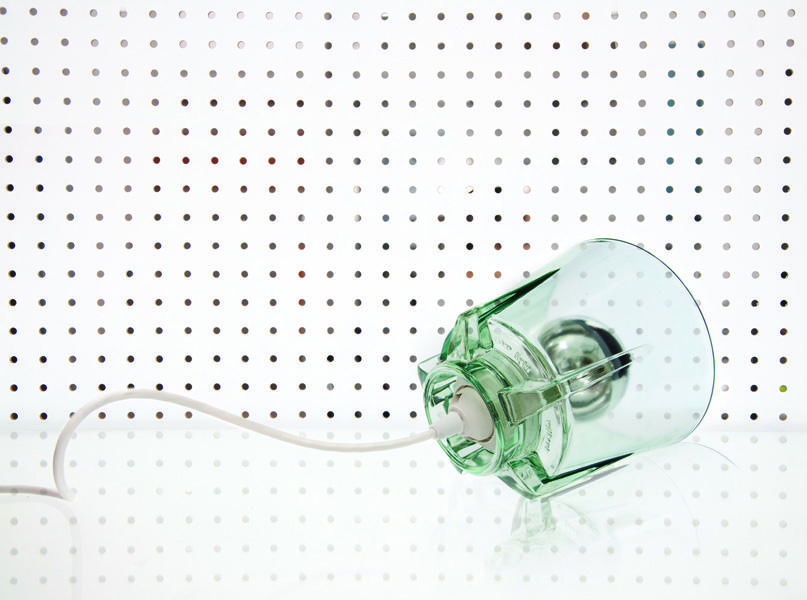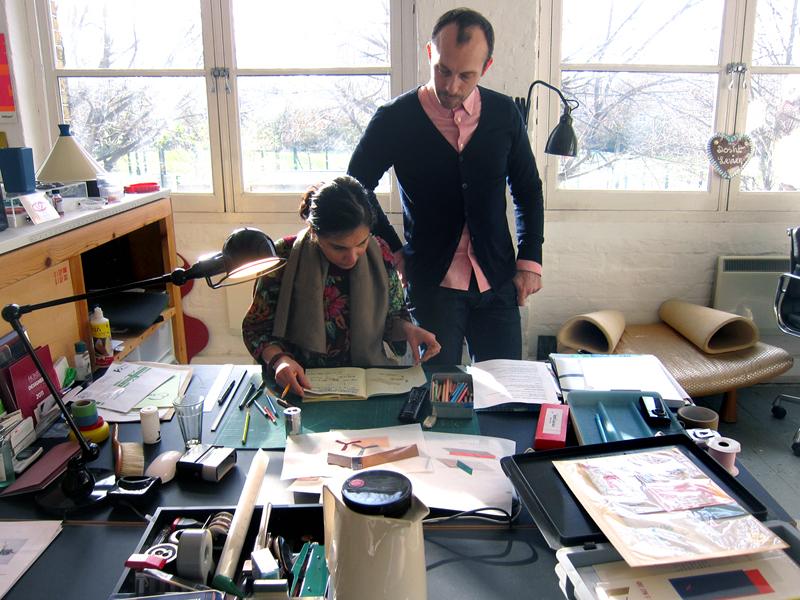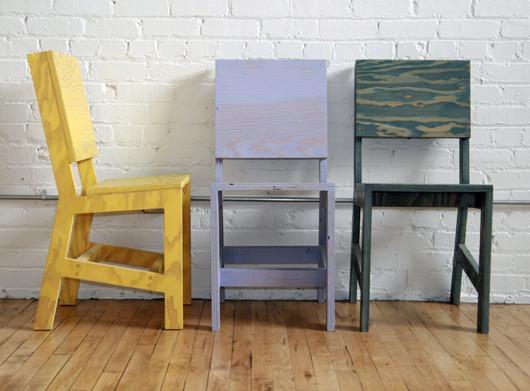
03.05.12
Studio Visit
Todosomething, Furniture Designers
PHOTOS BY MARCO ANNUNZIATA (ROCKER AND ROCKER PARTS), TODOSOMETHING (PRODUCT SHOTS), AND DAVID JOHN (EVERYTHING ELSE)
Todosomething is a Los Angeles–based design and fabrication studio that specializes in custom furniture and cabinetry with precise, exquisite finishes and subdued color palettes. But in the last few years, as their studio has grown, partners Chad Petersen and Dakota Witzenburg have begun producing their own products as well, which are extensions of their minimal design aesthetic—the ’60s-inflected, powder-coated metal (S)tool, the paint-tipped plywood A(+) Chair, a scorched-pine slab table with spindly steel legs. Between the two practices, which overlap in more than just appearance, they’ve cultivated a reputation as representatives of a certain Modern American style, one influenced by everything from Sol Lewitt to Shaker furniture.
Over the past year, I’ve visited Todosomething’s East L.A. studio countless times. When I once casually asked Wizenburg how he and Petersen arrived at that name, he told me: “Todo means everything in Spanish, so ‘everythingsomething’ seemed sort of funny to me. On the phone, people often think we’re joking when we say it, and ask again like we misspoke.” It also summed up the pair’s eagerness about their new endeavor: At the beginning of the partnership, they were asked to do a bit of everything, and they were careful to not turn down any work. “We built things for artists, galleries, designers, and anyone who somehow found us,” says Witzenburg.
By the time I first discovered their work in 2010, they had already come out with several studio projects, including the LP Cabinet I was admiring during their opening at curator Brooks Hudson Thomas’s former concept store, Specific. The conversation we had that night has since led to an ongoing friendship, which led to this interview for Sight Unseen.
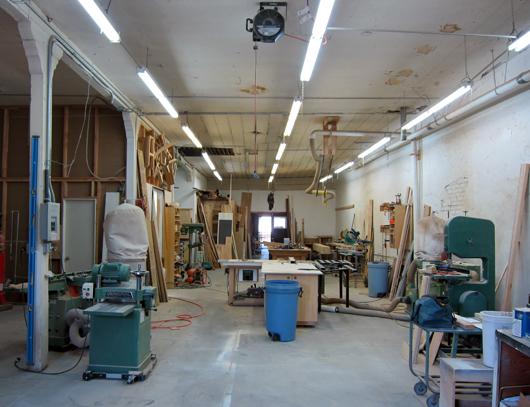 What drives you to design?
What drives you to design?
Chad: The tendency to tinker, and the tendency to wonder why things are how they are. Maybe it’s a sign of how potentially judgmental I am, only I direct it towards objects rather than people. I just can’t deal with stuff that doesn’t look right to me. I just have to change it, or make it myself. If you think about how much in our world is man-made, you realize just how huge of an arena for exploration it is, right? I guess I just feel overwhelmed by that, and therefore choose to work on the types of things that I am surrounded by when I wake up in the morning, i.e. interior design.
What did your work focus on before the two of you founded todosomething?
Dakota: My sculptural work explored the body’s relationship to objects and spaces. A lot of it had to do with my own size. I’m rather tall (6’9”), and standard doors can be a problem if I’m not paying attention. Tables and chairs don’t seem to work either. I started making my own furniture and objects to deal with these things out of necessity, though I noticed that they could really be Frankenstein-type objects and wouldn’t always work for other people. I think I’ve always paid particular attention to the relationships between things and it’s become an obsession that I’ve honed into a career.
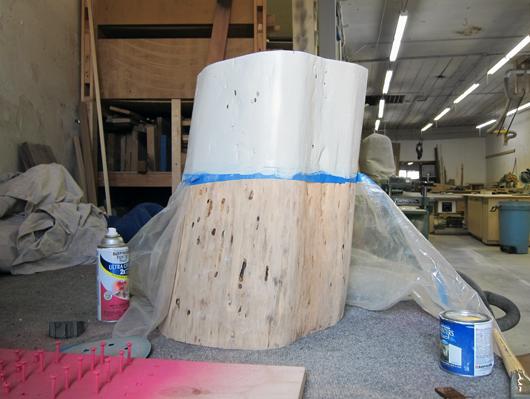 What was your early exposure to art and design?
What was your early exposure to art and design?
Dakota: I grew up in Iowa, in the country, where my father built our house and my mother had a huge garden. I liked to dig holes and somehow the ’80s didn’t really make it to Iowa.
What are your favorite materials to work with?
Chad: Simple materials, and more importantly, simple techniques with simple materials. Which is weird, because we work primarily in wood, which I think is a very complicated material. We’re drawn to materials that have some sort of naturalness to them, materials that would be at the perimeter of the grocery store, rather than in the aisles.
If you weren’t designers, what would you be?
Dakota: A Hammond B3 organ player. I used to collect organs in Oregon, and within my house we owned about a dozen. I personally owned 6! I don’t know how to play, but I love the sound. I was in a band called The Organ Fetish and we won second place. If I had it to do all over again, I would start way back at age 3 and would have asked for an organ rather than a hammer.
Chad: I would be a conceptual artist, except that I don’t have that kind of brain, and I would tire of the social scene, so I’d fall back on design again.
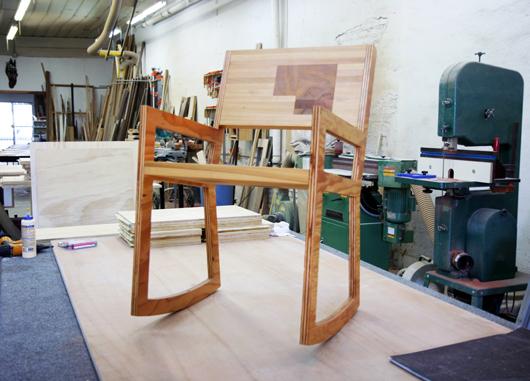
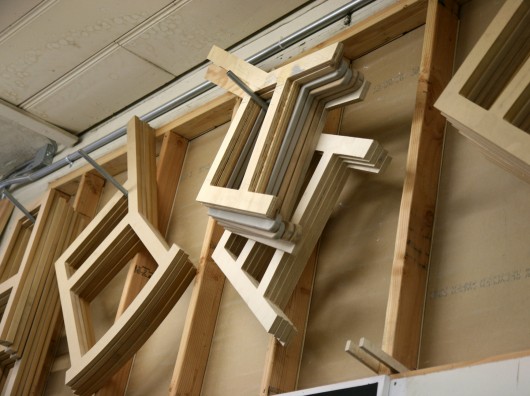 You work a lot with wood. What are your thoughts on finishes?
You work a lot with wood. What are your thoughts on finishes?
Chad: Well, I sort of have a finish fetish. As a kid, I had a best friend who’s family was way into cars and airplanes. By “way into,” I mean they collected them, worked on them, restored them. They actually built airplanes and raced them.
Once, they were preparing a plane for a race, and my buddy and I were given the task of wet-sanding the painted-fabric wings. The garden hose poured a stream out over this fire red skin of an airplane wing, and we stood there with a sanding block and gently massaged it in the direction that air would pass over it. The sandpaper was probably 2000 grit, which is so fine that it really is a polishing effect, not what most people imagine when they think of “sanding.”
I had a new appreciation for paint, craftsmanship, and the details after that little job. And it left a mark on my psyche or something. Later, in art school, I found myself drawn to minimalism, and more specifically to the West Coast finish-fetish guys, like John McCracken and Billy Al Bengston. A lot of those guys around that time were in one way or another influenced by car culture, either in the formation of their work—such as Richard Prince’s shields—or in the tools that they used to create it, as in Bengston’s sprayed auto-paint works. All that stuff just got me started obsessing, I suppose.
Once Dakota and I started working together, it just sort of fell into place that I would be the finishes guy. In the beginning, we both liked the materiality of unfinished wood so much that we had a hard time with the thought of altering it in any way. But folks wanted stuff finished, so we had to start learning. Most of the time in our own design, our goal has been to minimize the finish as much as possible, but I think we’re both starting to realize that finishing wood can be a primary component in our design, rather than a background element. Wood is a particularly interesting material for finishing, too. It has interesting properties that can be exploited if you’re in the know.
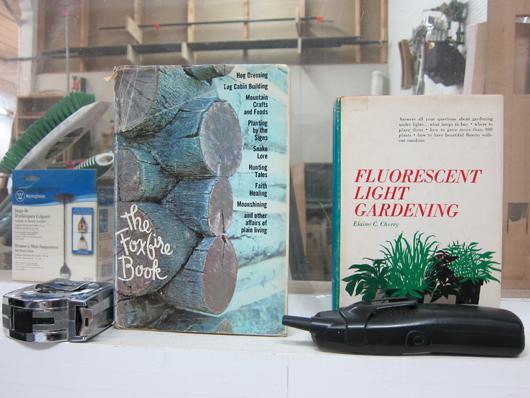
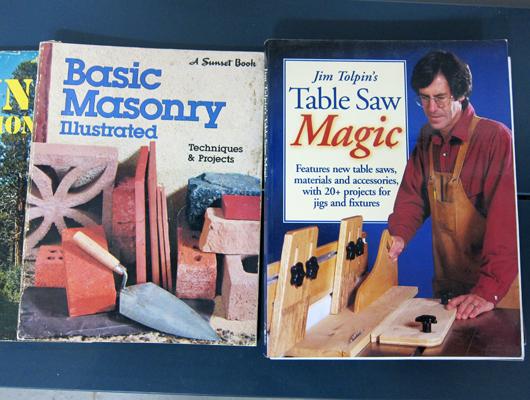 Chad, you mentioned a certain book you’ve been absorbed in. Can you tell me about it?
Chad, you mentioned a certain book you’ve been absorbed in. Can you tell me about it?
Chad: Obviously people have been manipulating the color of wood for centuries, so I started looking for old secrets. I picked up a couple of books by a man named George Frank. George was a real old-school pro with works in the Louvre. He comes from the generation of wood finishers that are like chemists: They use chemicals, not dyes, to change the color of the actual material of the wood itself. We’ve experimented with this a little, and it’s pretty interesting. I’m interested in reviving some of this old world craft, and finding out how it can be made current in our designs.
Can you tell me about the 20-foot burned table that sits in the entryway of your studio?
Chad: It’s actually 16’ 4”, but it still takes a pretty big truck to move it. [Laughs] I was dwelling on a bar-top I saw at a local wine bar that was really topographical and black. I’m constantly picking apart things I see, wondering how they might be made. I wondered what would happen if we burned some wood, like a pine or fir, and scraped away the loose material. Could that be a way to get a really cool topography, and a really interesting black? Then we had this invitation to produce a show, and we decided to make a huge sculptural banquet table with a massive, heavy top perched on thin, spindly legs. Kind of a neo-gothic thing.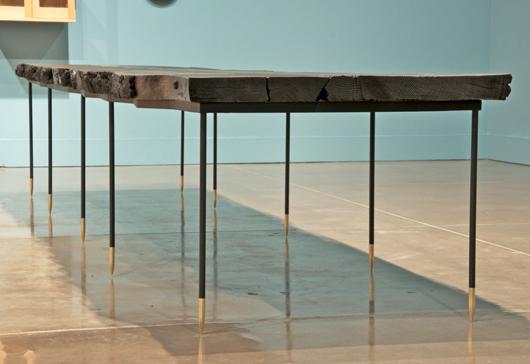
It was the perfect chance to experiment with burning wood as a part of the finishing process. We got a propane torch, a 16’ sugar pine slab, and went for it. The pointed, brass-tipped feet ended up looking like bullets, which was weird at first, but I’ve come to embrace it. We wanted to stitch the crack on the top together, but were a little weary of the typical bowtie shape, so we came up with the racetrack shape, plus screws. Since the stitches seemed more decorative than functional, we thought the screws would do the job of managing the crack and providing some lo-fi visual interest. We’re also both really fond of the idea that our brass inserts appropriate, in their own way, a little bit of Richard Artschwager’s “blps.” We’re big fans of his work.
What’s one tool you can’t live without?
Dakota: I have a Cross pen that I’ve had for about 10 years. It has my name on it. Last year I thought I lost it on a job, and my heart sank. I bought a new one thinking I could convince myself it was the same, but… Luckily I found it in a chair some months later. It was a great day.
Chad: All of our Festool products, Sketchup Pro, and our propane flamethrower.
